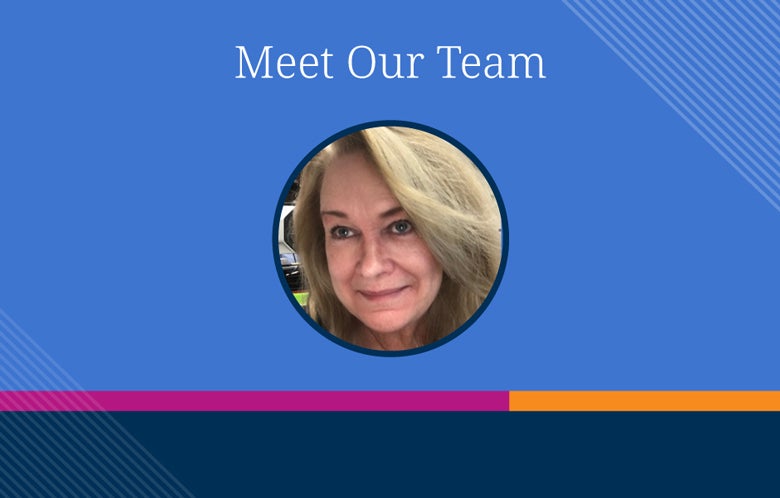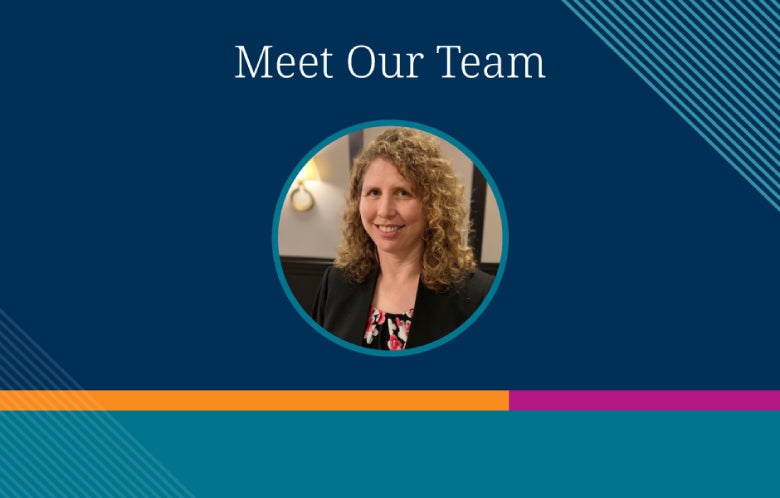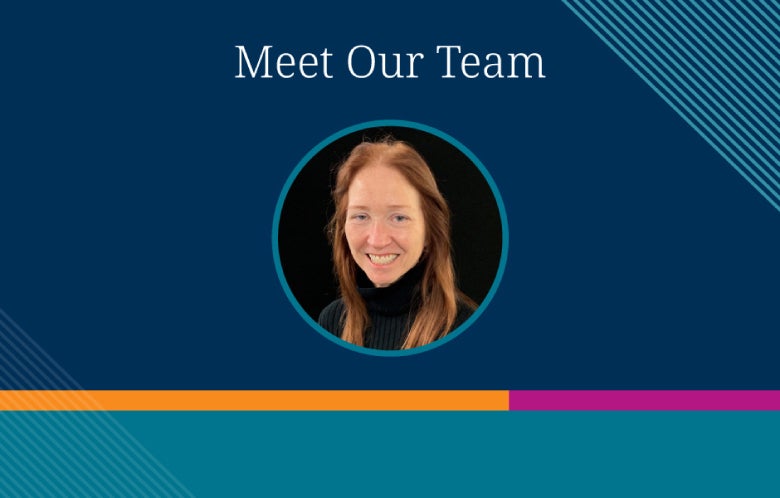Q. Tell us a little bit about yourself.
A. I have been a critical care nurse for more than 20 years and a critical care nurse practitioner for more than 14 years. My roles have ranged from being part of the nationally recognized LA-USC Trauma Team, managing the Southern California Regional Transplant Bank and being the CRA II (clinical trial team leader) for three clinical trials) and being part of the team that developed the Cardiac/Pulmonary Post-Transplant Protocol or USC. I’ve also volunteered monthly clinician services at Planned Parenthood for more than four years and teach anatomy/physiology in the biology department at Pasadena City College one of the top 10 community colleges in the United States, where I’m in my final nursing semester.
I have two sons. Matt is a portfolio manager for international distressed debt and Greg is finishing up his final year at UCLA. He is passionate about public policy and law. My fur baby is a 90-pound standard poodle, Raleigh. He’s better than an alarm when he wants to go for his daily 5:30am walk.
I love to read, read, read (currently simultaneously reading “Darkness at Noon” and “1984” for the compelling messages they bring to today’s world). I also love quilting, baking different breads, and keeping up with our family goal of completing visits to all the big-league baseball parks — we’ve finished with the National League (Go Dodgers!) and are working through the American League parks.
Q. What did you do prior to joining EBSCO’s Nursing and Allied Health Editorial Leadership Team?
A. I was an educator for the Nurse Residency and taught ACLS, BLS, ECG Monitor Tech, and CNA classes for Adventist Health Glendale. I also served as Senior Clinical editor for the Cumulative Index to Nursing and Allied Health Literature (CINAHL) and wrote/edited topics for the Nursing Reference Center™, Nursing Reference Center™ Plus, and Dynamic Health™.
Q. What inspired you to become a healthcare professional?
A. After earning my MBA at USC, I worked at Wells Fargo as a Team Manager for the bond trading floor and while the challenge was nonstop, I wanted something that touched my heart. I planned for medical school and was accepted at UCLA, but my second son changed those plans when he decided to make his entrance into the world a bit early and confined us to the NICU. Family first, so I pivoted and hoped nursing would answer my desire to educate and empower patients and other clinicians about healthcare decisions. Three years after finishing my MBA program, I began nursing school (I already had the science background as one of my majors was biochemistry). I knew I had found my perfect answer when I left my first day of clinical nursing and sat in my car crying in gratitude for the blessings I had found.
After earning my MBA at USC, I worked at Wells Fargo as a Team Manager for the bond trading floor and while the challenge was nonstop, I wanted something that touched my heart.
After earning my MBA at USC, I worked at Wells Fargo as a Team Manager for the bond trading floor and while the challenge was nonstop, I wanted something that touched my heart.
Q. What drew you to EBSCO and our Nursing and Allied Health Editorial Leadership Team?
A. I wanted to continue to educate and empower patients and clinicians. My 12 years at EBSCO have given me the envious opportunity to fulfill these goals exponentially, far beyond the world of bedside nursing and the classroom.
Q. What is your favorite part of your job?
A. Solving problems and developing and providing powerful information to our subscribers.
Q. What is your professional passion as it relates to healthcare?
A. I can be quite evangelical about certain subjects, especially when a potentially overwhelming subject can be effectively condensed to empower clinicians to save lives. My current passion is sharing the word about sepsis. Someone dies from sepsis (not just develops) every three seconds. If we can sufficiently empower nurses by delivering critical information and encouraging established response protocols (1-hour, 3-hour, and 6-hour bundles), it can become a “never event” (meaning 100% preventable). Every hour of delay equates to a ten percent decline in survival. For example, if a clinician recognizes the critical change in vital signs and orders (per protocol) meds and labs that could mean a one to two hour delay. In this same scenario, meds and blood work are drawn and sent to the lab, meaning an hour delay for delivery of meds and lab results. Meds are administered which could mean a one-hour delay. Where does this lead us? At least a three-hour delay and a 30 percent decline in survival (and this is often considered an optimal situation).
Nurses can be guided to understand that hospitals don’t admit patients for pneumonia or urinary tract infections (those are just the presenting problems), but that patients are admitted because their immune systems are compromised (they can’t be safely sent home with a simple prescription). Patients are admitted to the hospital to monitor for SIRS (systemic inflammatory response syndrome) which can lead to sepsis, potentially leading to MODS (multi-organ dysfunction syndrome) and in the worst cases morbidity (loss of limbs) or mortality (death). A few simple, easily remembered numbers (vital signs) can cascade to the final insults, loss of limbs and lives, within hours.
As you can probably tell (without the 46-page sepsis PowerPoint!), I know we can make life-changing differences in our roles at EBSCO.



